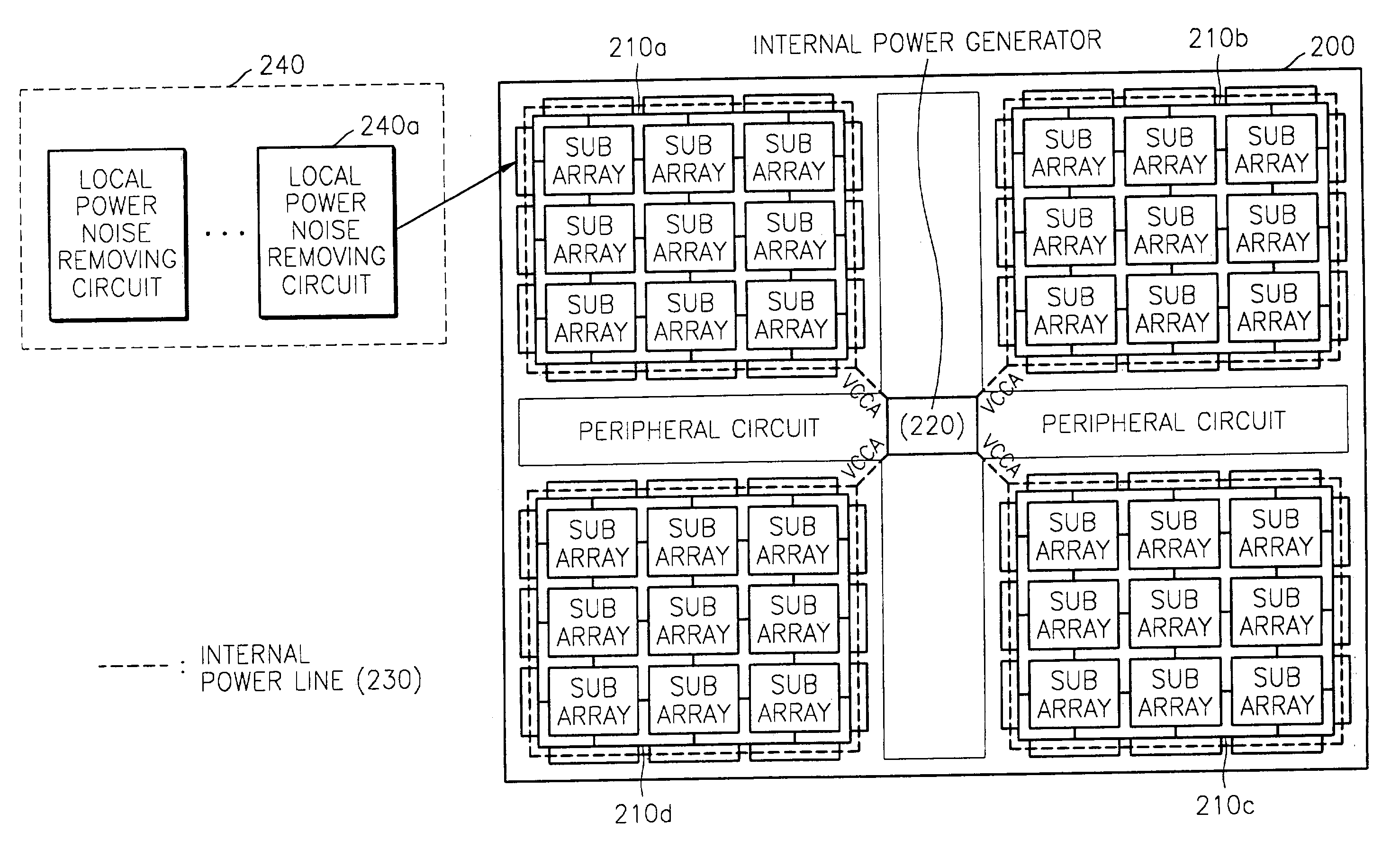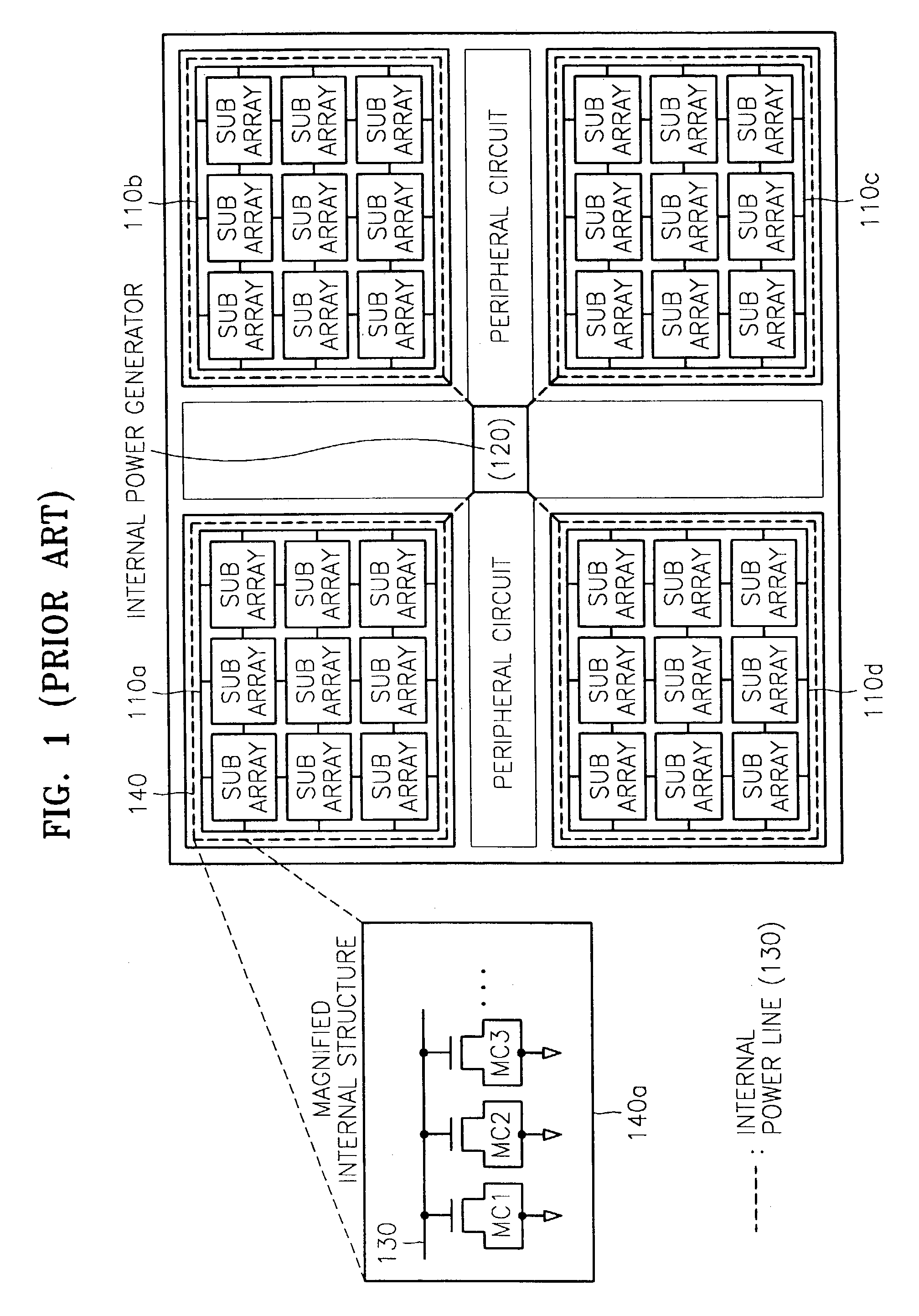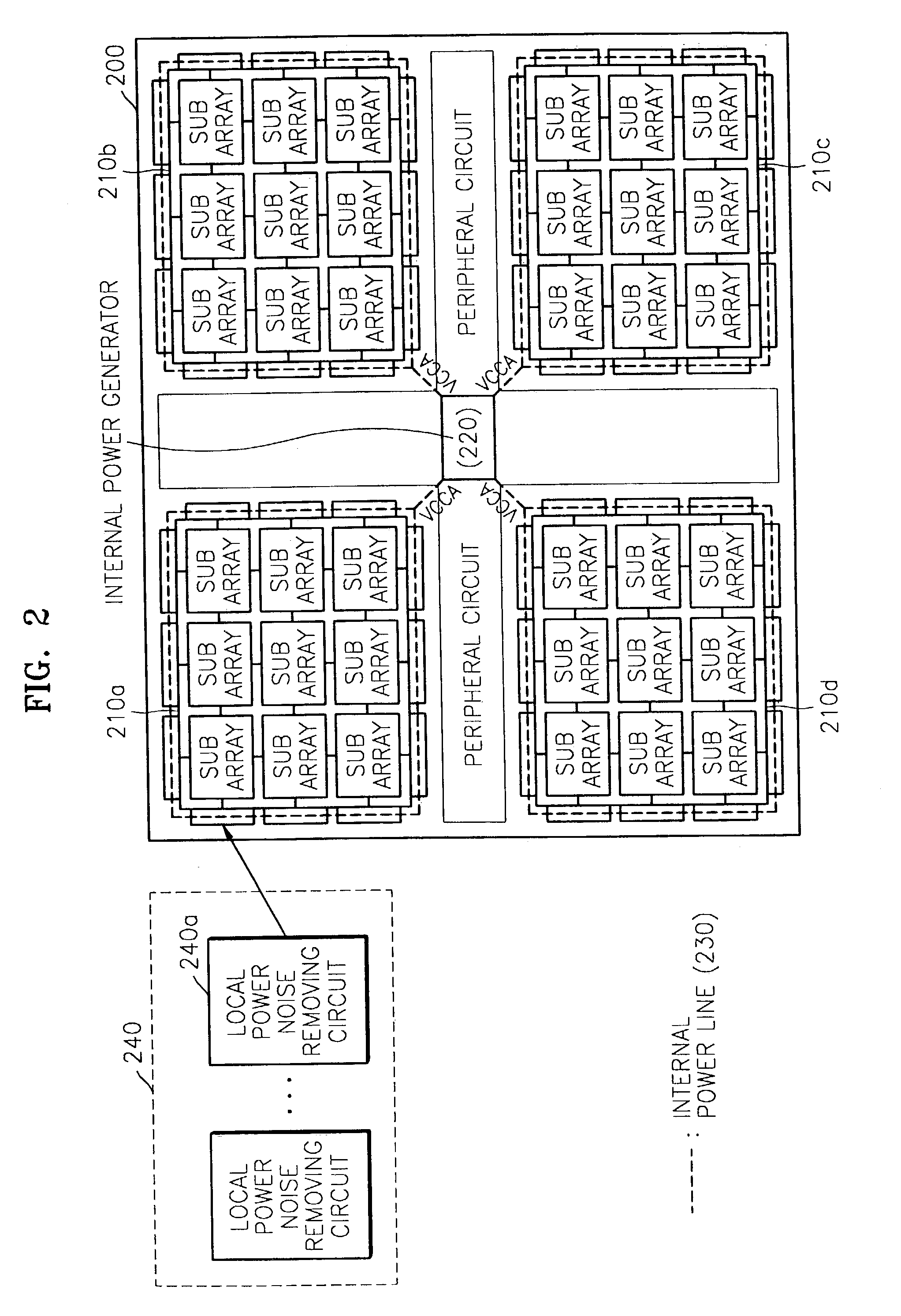Semiconductor memory device having a circuit for removing noise from a power line of the memory device using a plurality of decoupling capactors
a technology of decoupling capactors and memory devices, which is applied in the direction of power supply for data processing, liquid/fluent solid measurement, instruments, etc., can solve the problems of increasing the size of the chip, affecting the amount of charges stored in the cell capacitors, and dram malfunction
- Summary
- Abstract
- Description
- Claims
- Application Information
AI Technical Summary
Benefits of technology
Problems solved by technology
Method used
Image
Examples
Embodiment Construction
[0027]As described above, since the MOS transistor type decoupling capacitor has a small electrostatic capacity, the conventional technique is to couple a large number of such capacitors to the internal power line in an effort to reduce noise induced fluctuations. This adversely increases the size of the chip. To overcome this problem, according to one aspect of the present invention, decoupling capacitors are constituted by cell capacitors of the DRAM cell. DRAM cell capacitors occupy a significantly smaller area in the chip and exhibit a higher capacitance than MOS transistor type capacitors.
[0028]According to another aspect of the present invention, the decoupling capacitors are partitioned into at least two groups, and individual decoupling capacitor groups are tested to determine if they are defective, for example, to determine if there current leakage caused by a defective dielectric layer. Any defective decoupling capacitor group is then isolated from the others.
[0029]The pre...
PUM
 Login to View More
Login to View More Abstract
Description
Claims
Application Information
 Login to View More
Login to View More - R&D
- Intellectual Property
- Life Sciences
- Materials
- Tech Scout
- Unparalleled Data Quality
- Higher Quality Content
- 60% Fewer Hallucinations
Browse by: Latest US Patents, China's latest patents, Technical Efficacy Thesaurus, Application Domain, Technology Topic, Popular Technical Reports.
© 2025 PatSnap. All rights reserved.Legal|Privacy policy|Modern Slavery Act Transparency Statement|Sitemap|About US| Contact US: help@patsnap.com



